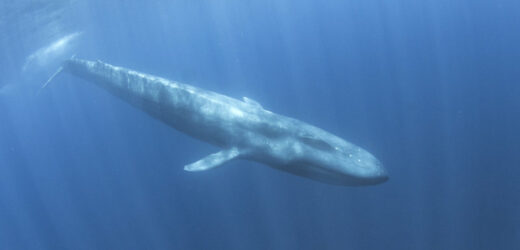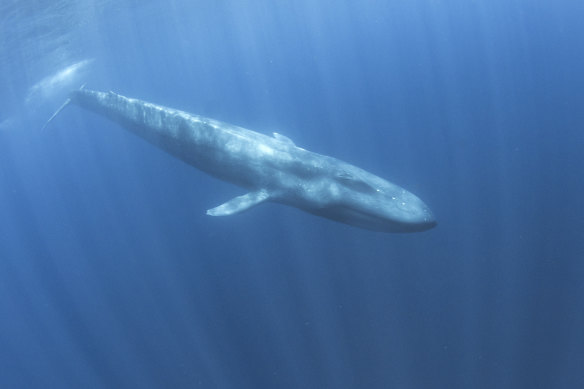Save articles for later
Add articles to your saved list and come back to them any time.
Key points
- La Nina weather conditions are set to play a part in a reduction of the number of whales who are singing this winter migration season.
- It comes as many holidaymakers along the east coast will hope to catch a glimpse of up to 50,000 migrating humpback whales.
- Researchers say the number of song detections during La Nina years was up to 10 times more than those in El Nino or neutral years.
There’s one sound our oceans will hear less of this winter as thousands of whales begin their migration as ocean temperatures begin to warm: the sound of them singing.
Scientists at the University of NSW studied whale recordings for almost 20 years and found the movements of the pygmy blue whale could be impacted by climate cycles. The rare whales, which are usually quite shy and reclusive, like to sing and their calls were picked up using a network of underwater listening devices off the coast of Western Australia.
New research shows that pygmy blue whales may sing more in La Nina years.Credit: iStock
It comes as many holidaymakers along the east coast of Australia will hope to catch a glimpse of the 40,000 to 50,000 humpback whales expected to pass this migration season.
Humpback whales typically begin their annual procession from their Antarctic feeding grounds to warmer waters in the Great Barrier Reef from June, although some lucky enthusiasts have already spotted some.
The scientists’ research, published in Frontiers in Marine Science, found while the number of whale call detections changed year to year, the variability was linked to La Nina. The weather pattern typically brings cooler ocean temperatures and increased rainfall over much of the east coast.
Researchers noted that the number of song detections during La Nina years was up to 10 times more than those in El Nino or neutral years.
“We found the number of detections was related to the strength and timing of La Nina events, suggesting it may be an important factor influencing their movements,” Dr Gary Truong, lead author of the study.
There are 10 different acoustic pygmy blue whale populations – the smallest subspecies of the blue whale – in the Southern Hemisphere, with each species singing a unique tune.
“Now that we’re out of La Niña, the number of calls we detect may decline, which could mean a period where the whales may not be as productive,” Truong said.
Hunting is one of key causes for whales low numbers. While some populations have bounced back, including the humpback, others have struggled.
Macquarie University marine scientist Dr Vanessa Pirotta said whales were difficult animals to study, with insufficient data for certain species, like the pygmy blue whale or sperm whale, compared to the humpback whale. The former have less reliable migratory patterns and tend to swim further offshore than humpback whales.
While hunting no longer poses a threat to whales, climate change and human-led activities did. As oceans warm, the availability of food sources including krill could decline.
“Commercial shipping and looking for oil and gas can be detrimental to the whales when they are present,” Troung said. “Managing those activities, particularly over the more active migration years, can help reduce the impact on these animals as they swim past.”
Troung added that while these impacts and their influence on animals might not be well-known, they could make habitats less livable for marine animals.
Get to the heart of what’s happening with climate change and the environment. Our fortnightly Environment newsletter brings you the news, the issues and the solutions. Sign up here.
Most Viewed in Environment
From our partners
Source: Read Full Article



